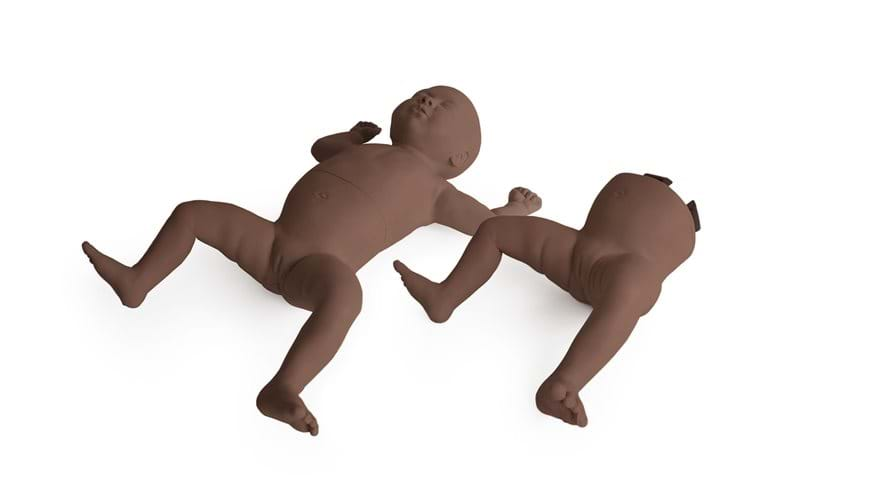Back
Background: Developmental dysplasia of the hip (DDH) occurs in 1-2 of every 1,000 infants and can result in significant long-term morbidity if undiagnosed and untreated. The newborn physical exam is a critical screening tool to identify infants at high risk for DDH. A recent multi-center study by the APA Better Outcomes through Research for Newborns (BORN) Network of pediatric interns identified that less than half accurately perform the infant hip exam. In that study, 51% of participating interns reported that they first learned their infant hip exams from faculty pediatricians. However, there is no previous research assessing the exam skills of attending physicians.
Objective: Assess the skill of attending pediatricians in performing the infant hip exam across multiple academic institutions.
Design/Methods: This was a cross-sectional study involving attending pediatricians across 4 residency programs. Subjects reported their experience with performing the infant hip exam. They then demonstrated the exam on infant hip models and their performance was assessed using a checklist derived from textbook descriptions of the infant hip exam. Both a normal model and model constructed to simulate pathologic exam findings were examined. Data were analyzed using descriptive statistics.
Results: We enrolled 53 pediatricians who directly oversee resident learners. All faculty reported performing over 100 infant hip exams with a response range from 100 to 30,000 lifetime examinations per participant. Over one-quarter (26%) of subjects failed to remove the infant’s diaper during examination. Three-quarters (77%) were unable to identify asymmetric thigh folds and 80% were unable to identify an abnormal Galeazzi sign. 36% of faculty were unable to identify an existing hip dislocation utilizing the Ortolani maneuver and 30% of faculty could not correctly identify hip laxity utilizing the Barlow maneuver.
Conclusion(s): Our study has identified significant variability and low accuracy in faculty’s performance of the infant hip exam. We found a surprisingly low ability to identify abnormal findings indicative of DDH and poor exam techniques among faculty. Since our previous work ascertained that pediatric interns often learn the infant hip exam from faculty physicians, this data may explain why their skills were not optimal. If pediatric trainees exam skills are to improve, more efforts should be directed toward improving faculty performance with standardized training curriculum and direct observation of techniques. The results of this study should assist educators in assessing barriers to appropriate teaching of the infant hip exam.
FIgure 1
.jpg) Example of direct observation and assessment of a pediatrician's infant hip exam on both a normal and abnormal infant hip model.
Example of direct observation and assessment of a pediatrician's infant hip exam on both a normal and abnormal infant hip model.
Figure 2
 Infant hip model utilized in study with interchangeable lower body to represent normal hip anatomy and anatomy consistent with developmental dysplasia of the hip
Infant hip model utilized in study with interchangeable lower body to represent normal hip anatomy and anatomy consistent with developmental dysplasia of the hip
Neonatal General 11
Session: Neonatal General 11
415 - Assessing the Accuracy of Pediatric Faculty in Performing the Infant Hip Exam
Monday, April 28, 2025
7:00am – 9:15am HST
Brian Graziose, Uniformed Services University of the Health Sciences F. Edward Hebert School of Medicine, Silver Spring, MD, United States; Joseph O. Lopreiato, Uniformed Services University of the Health Sciences F. Edward Hebert School of Medicine, Bethesda, MD, United States; Sheevaun Khaki, Doernbecher Children's Hospital at Oregon Health & Science University, Portland, OR, United States; Laura Albert Suarez, Children's Hospital of Richmond at VCU, Richmond, VA, United States; Linda D. Meloy, Children's Hospital of Richmond at VCU, Richmond, VA, United States; Laura McWhirter, Oregon Health and Sciences University, Portland, OR, United States; Sidney Zven, Walter reed, Bethesda, MD, United States; Kirsten Robinson, Texas Tech University Health Sciences Center School of Medicine, Lubbock, TX, United States

Brian Graziose, MD (he/him/his)
Pediatric Resident
Uniformed Services University of the Health Sciences F. Edward Hebert School of Medicine
Silver Spring, Maryland, United States
Presenting Author(s)
Background: Developmental dysplasia of the hip (DDH) occurs in 1-2 of every 1,000 infants and can result in significant long-term morbidity if undiagnosed and untreated. The newborn physical exam is a critical screening tool to identify infants at high risk for DDH. A recent multi-center study by the APA Better Outcomes through Research for Newborns (BORN) Network of pediatric interns identified that less than half accurately perform the infant hip exam. In that study, 51% of participating interns reported that they first learned their infant hip exams from faculty pediatricians. However, there is no previous research assessing the exam skills of attending physicians.
Objective: Assess the skill of attending pediatricians in performing the infant hip exam across multiple academic institutions.
Design/Methods: This was a cross-sectional study involving attending pediatricians across 4 residency programs. Subjects reported their experience with performing the infant hip exam. They then demonstrated the exam on infant hip models and their performance was assessed using a checklist derived from textbook descriptions of the infant hip exam. Both a normal model and model constructed to simulate pathologic exam findings were examined. Data were analyzed using descriptive statistics.
Results: We enrolled 53 pediatricians who directly oversee resident learners. All faculty reported performing over 100 infant hip exams with a response range from 100 to 30,000 lifetime examinations per participant. Over one-quarter (26%) of subjects failed to remove the infant’s diaper during examination. Three-quarters (77%) were unable to identify asymmetric thigh folds and 80% were unable to identify an abnormal Galeazzi sign. 36% of faculty were unable to identify an existing hip dislocation utilizing the Ortolani maneuver and 30% of faculty could not correctly identify hip laxity utilizing the Barlow maneuver.
Conclusion(s): Our study has identified significant variability and low accuracy in faculty’s performance of the infant hip exam. We found a surprisingly low ability to identify abnormal findings indicative of DDH and poor exam techniques among faculty. Since our previous work ascertained that pediatric interns often learn the infant hip exam from faculty physicians, this data may explain why their skills were not optimal. If pediatric trainees exam skills are to improve, more efforts should be directed toward improving faculty performance with standardized training curriculum and direct observation of techniques. The results of this study should assist educators in assessing barriers to appropriate teaching of the infant hip exam.
FIgure 1
.jpg) Example of direct observation and assessment of a pediatrician's infant hip exam on both a normal and abnormal infant hip model.
Example of direct observation and assessment of a pediatrician's infant hip exam on both a normal and abnormal infant hip model.Figure 2
 Infant hip model utilized in study with interchangeable lower body to represent normal hip anatomy and anatomy consistent with developmental dysplasia of the hip
Infant hip model utilized in study with interchangeable lower body to represent normal hip anatomy and anatomy consistent with developmental dysplasia of the hip
